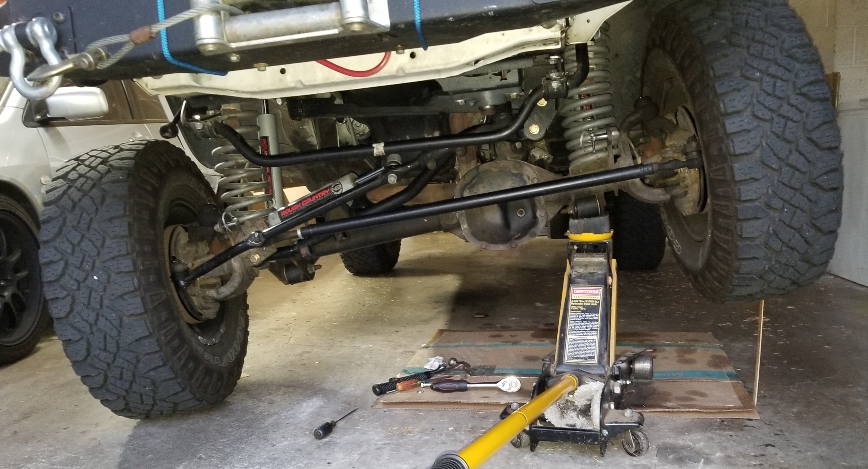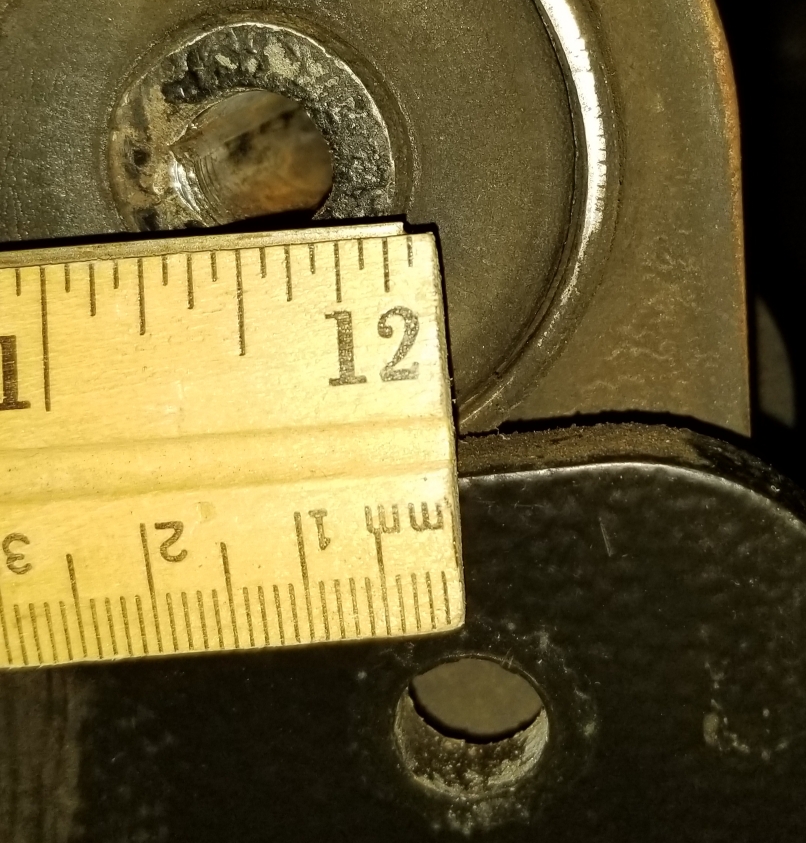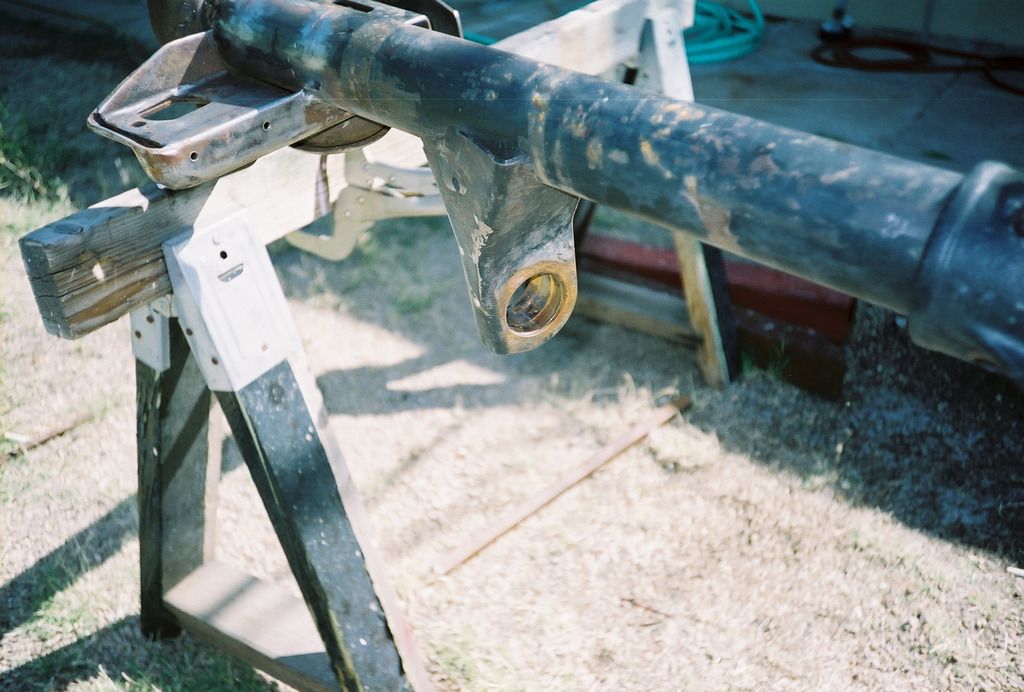It seems like there is still not total clarity of the bind being spoken about in this thread and why bushing selection is being discussed.
The spoken about bind in this thread has to do with, basically, pinion angle, and not specifically the rotation/flex of the axle when looking at it from the front or back of the Jeep.
When the whole axle compresses....say on a speed bump, the pinion of the axle will generally begin to angle downward to continue to point to the T-case. When at full droop of both wheels, that pinion angle will turn slightly upward toward the T-case. No bind in either of those case....but when one wheel is up, and one is down....that's when things get funky.
Now there is a battle over pinion angle between the two sets of control arms. In order to maintain a single pinon angle, a control arm needs to be shortened or lengthened somewhere to allow for it. This is why rubber bushings are recommended somewhere in a 4 link w/ trackbar or on a radius arm setup....they allow for that slight lengthening and/or shortening. Removing an upper link to go to only 3 attachments at the axle removes this issue entirely.
I am cranky because my new UCA clevite bushings have failed in about 1k miles on a 3" lifted XJ. My old XJ had clevites going for thousands of miles with a 6" lift and way more offroad miles with more flex. I want to get rid of them entirely now, but don't want to break anything by doing so. I still wager that the pinion angle doesn't change much with less than extreme flex, evidence being the many jeeps running Johnny Joints at all points of contact on stock style suspensions. The issue is always present, it's just a matter of degree of severity. A severity that I don't know at this time without going out and measuring.
Ok...too much. No more

for me today.


 for me today.
for me today.

